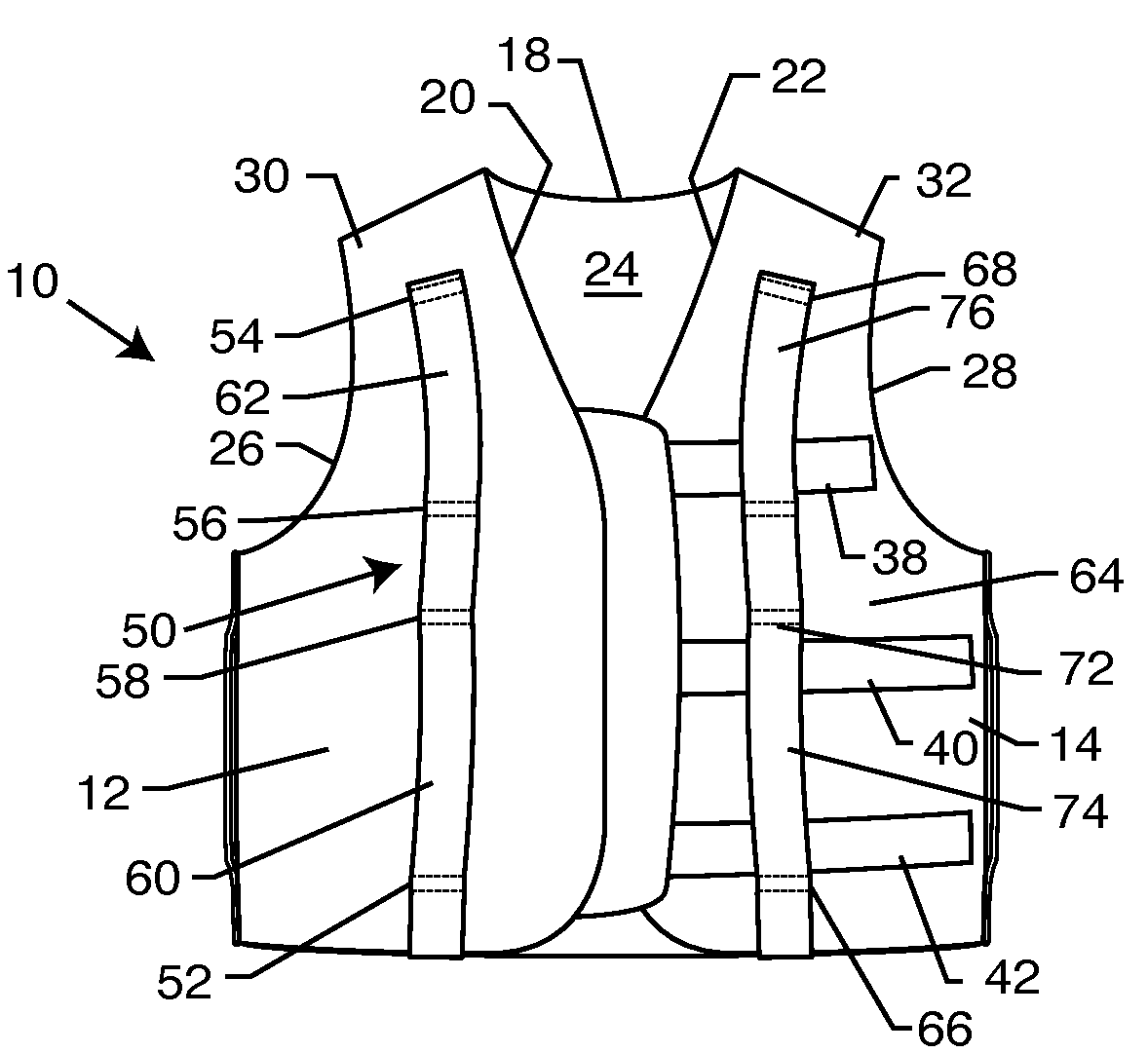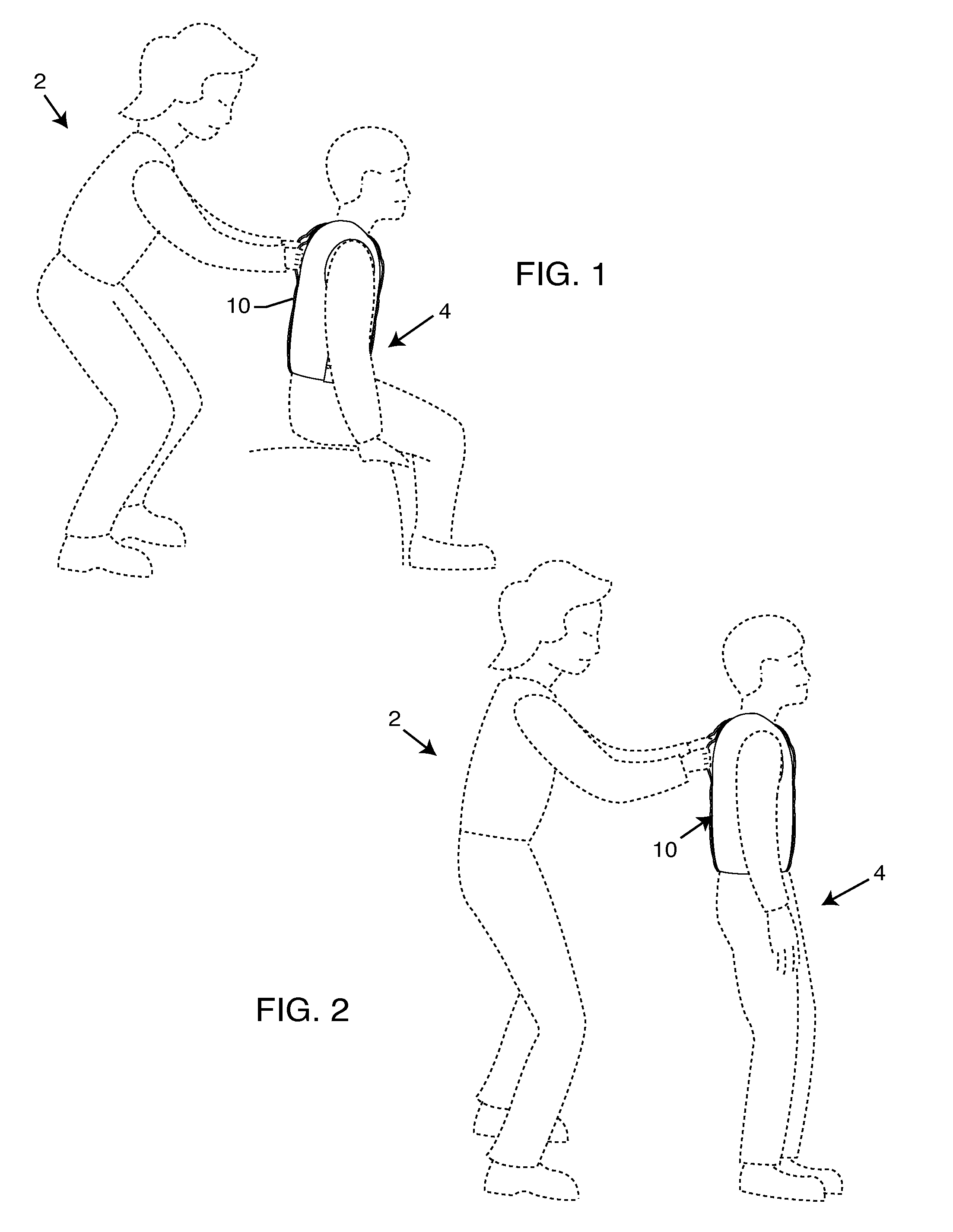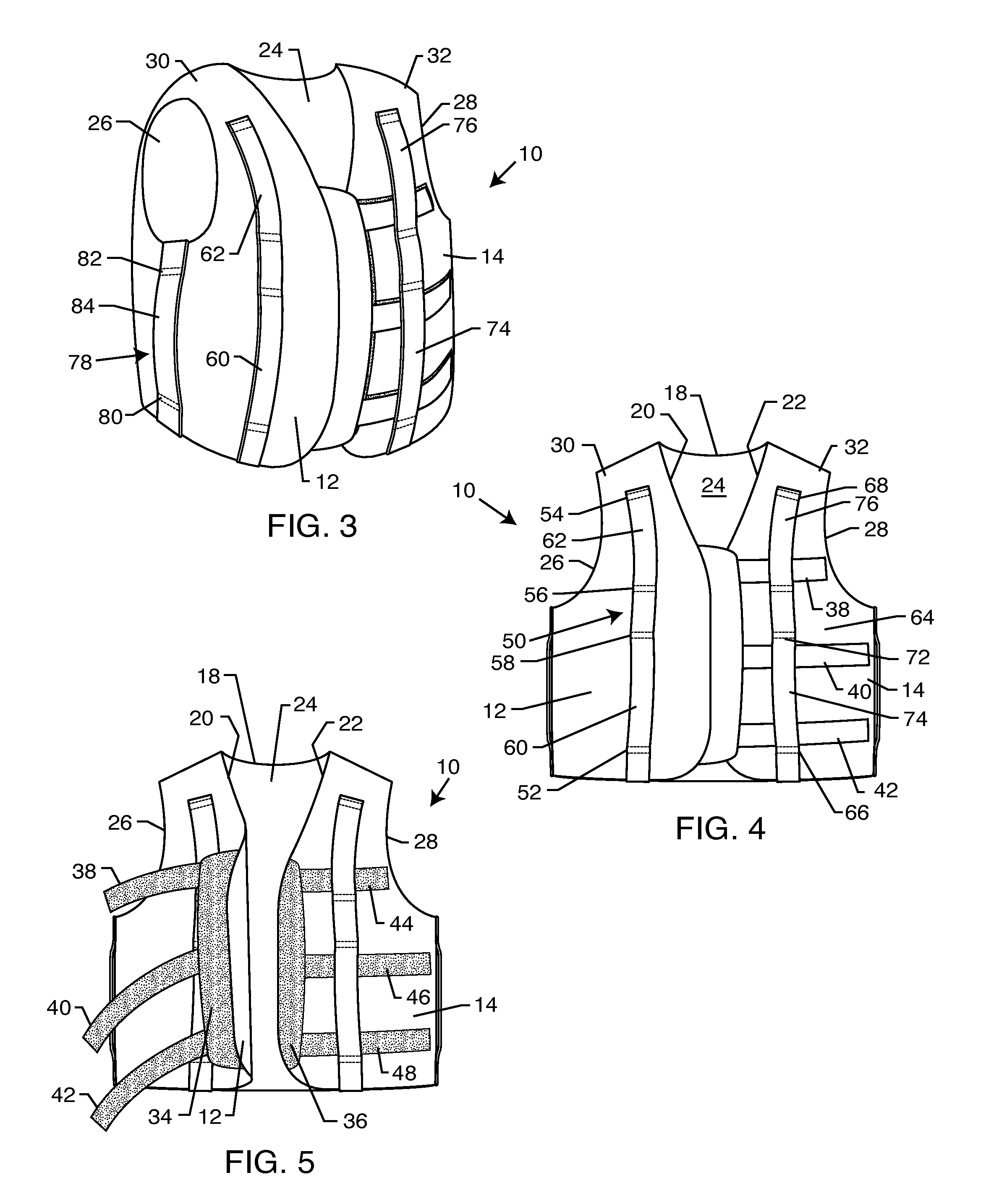Patient lift and gait assistance garment
a patient and gait assistance technology, applied in the field of patient lift and gait assistance garments, can solve the problems of difficult to grasp a patient to assist him or her in moving from one position to another, garments are not designed or adapted for easy grasping, and sometimes tear, and achieve the effect of simple installation and use, and relatively inexpensive manufacturing and purchas
- Summary
- Abstract
- Description
- Claims
- Application Information
AI Technical Summary
Benefits of technology
Problems solved by technology
Method used
Image
Examples
Embodiment Construction
[0031]The present invention provides a garment-type device in the form of a vest which is designed to enable a caretaker to safely assist a patient to move from one position to another. “Patient” is meant to mean any person irrespective of age, sex, heath condition, physical impairment or disability that requires, even if occasionally, assistance in moving. As an example, the vest 10 of the present invention is a garment that facilitates moving a patient from a wheelchair to another type of seating arrangement, such as an adjacent seat, bathroom stool, automobile, bed, etc. Further, the device is particularly useful for assisting a patient in getting out of and rising from a bed or in turning a bed patient from one position to another or assisting a patient who may be unstable when standing or walking.
[0032]With reference now to FIGS. 1 and 2, a caretaker 2 is illustrated standing next to a patient 4 wearing the lift and gait assistance garment vest 10 of the present invention, and ...
PUM
 Login to View More
Login to View More Abstract
Description
Claims
Application Information
 Login to View More
Login to View More - R&D
- Intellectual Property
- Life Sciences
- Materials
- Tech Scout
- Unparalleled Data Quality
- Higher Quality Content
- 60% Fewer Hallucinations
Browse by: Latest US Patents, China's latest patents, Technical Efficacy Thesaurus, Application Domain, Technology Topic, Popular Technical Reports.
© 2025 PatSnap. All rights reserved.Legal|Privacy policy|Modern Slavery Act Transparency Statement|Sitemap|About US| Contact US: help@patsnap.com



